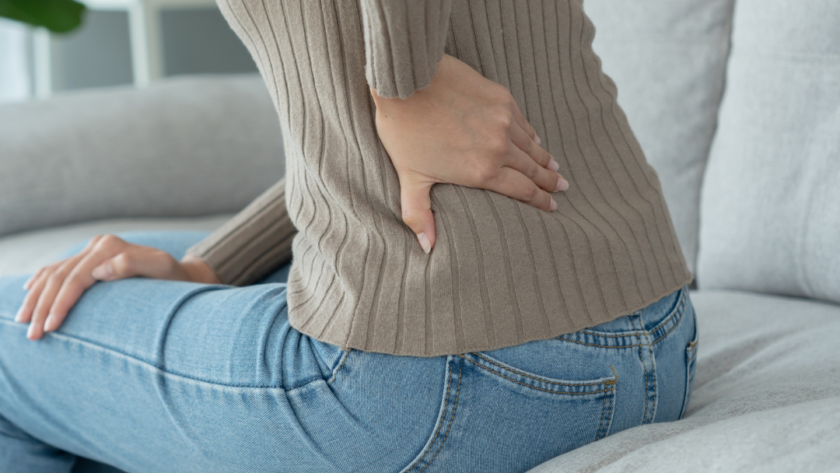Back pain is a pervasive ailment that affects millions of Americans, leading to discomfort, decreased quality of life, and increased healthcare costs. While several factors contribute to back pain, one often overlooked cause is the quality and suitability of your mattress. Understanding the link between mattresses and back pain is crucial for those seeking relief and better sleep quality.
Read on to learn whether your mattress could be blamed for your back pain.
The Impact of Mattress on Back Health
A mattress’s crucial role in maintaining proper spinal alignment is crucial. A well-suited mattress conforms to the spine’s natural curvature, ensuring an even distribution of body weight across the surface. This uniform support minimizes the pressure on any part of the spine, thereby preventing joint and spinal stress.
On the other hand, a mattress that is either unsuitable or has deteriorated over time can disrupt this alignment. Such disruption can worsen spinal positioning, potentially leading to or exacerbating existing back pain. Ensuring the mattress provides the proper support is essential for your spinal health and overall comfort.
Signs of a Bad Mattress
Several signs may suggest that a mattress contributes to back pain, pointing towards the need for its evaluation or replacement. One primary indicator is noticeable sagging, where the mattress visibly dips underweight, failing to provide uniform support. The age of the mattress also plays a critical role. For instance, a mattress older than seven to ten years loses its ability to support the body properly.
Additionally, waking up with discomfort or aches and experiencing relief when sleeping in different beds are strong hints that your mattress could be the culprit. Therefore, proper disposal is essential if you are considering replacing an old or unsuitable mattress. Utilizing services for mattress disposal ensures environmentally friendly practices and compliance with local regulations, which makes the transition to a new mattress smoother and more responsible.
Choosing the Right Mattress for Back Pain Relief
Selecting the right mattress can be daunting, given the myriad options available. The ideal choice varies from person to person and is influenced by several factors, which include the following:
- Firmness: The firmness of the mattress should support the spine’s natural alignment. People with lower back pain might benefit from a medium-firm mattress, as recommended by several studies.
- Material: Memory foam and latex mattresses are known for their pressure-relieving properties and ability to contour to the body’s shape. Innerspring mattresses, while traditionally popular, might not offer the same level of support and contouring.
- Sleeping Position: Side sleepers generally require a softer mattress to alleviate pressure on the hips and shoulders, whereas back and stomach sleepers might benefit from a firmer surface to maintain proper alignment.
Trying Before Buying
Testing a mattress before committing to a purchase is essential for ensuring it meets your needs. Many mattress companies understand this and offer sleep trials, typically ranging from a few weeks to several months. During this period, customers can return the mattress if they find it uncomfortable or unsuitable for their sleeping habits.
This opportunity to test the mattress in your home helps mitigate future discomfort and dissatisfaction, providing a safety net that can lead to a more informed and confident purchase.
Lifestyle and Environmental Factors
The quality of a mattress is just one aspect of what affects back health; lifestyle and environmental factors also play significant roles. Regular physical activity strengthens back muscles and enhances spinal stability, while overall physical health can affect how much support your body needs during sleep.
Furthermore, other elements of your sleeping setup, such as the type and quality of pillows and bed bases, are crucial. These components should work together to support your spine effectively, as inconsistencies in support can lead to discomfort and pain.
Enhancing Sleep Environment
Consider factors beyond your mattress to optimize your sleep environment for better back health. A quiet, dark, and cool bedroom can significantly improve the quality of your sleep. Noise disturbances can interrupt your sleep cycle, while excessive light can inhibit the production of melatonin, a hormone essential for sleep.
Also, maintaining a cooler room temperature facilitates a drop in body temperature that signals your body it’s time to sleep. These environmental factors, when controlled, can enhance the restorative quality of sleep, thus supporting better spinal health.
Regular Maintenance and Adjustment
Proper maintenance and regular mattress adjustment are critical to extending its lifespan and efficacy in supporting your back. Rotating the mattress periodically can prevent uneven wear and extend its functionality. A supportive bed base ensures that the mattress remains level and stable, which is necessary for proper spinal alignment.
Keeping the mattress clean also contributes to a healthier sleep environment, reducing allergens and maintaining the integrity of the materials. These practices help maintain the mattress’s condition, ensuring it continues to provide the necessary support for a healthy back.
When to Replace
Recognizing when to replace your mattress is vital to maintaining optimal back health and sleep quality. Common signs that suggest it’s time for a new mattress include increased discomfort during sleep, visible signs of wear and tear such as sagging or lumps, and the age of the mattress. Mattresses should be replaced every 7 to 10 years.
Ignoring these signs can lead to persistent back pain and poor sleep quality, so timely replacement is crucial for preserving your well-being and ensuring continuous support and comfort.
Conclusion
Back pain can significantly impact your quality of life, and the role of a mattress in exacerbating or alleviating this pain is substantial. Choosing the right mattress, maintaining it properly, and being mindful of other health and environmental factors can significantly improve your sleep quality and reduce the risk of back pain. Remember, a good night’s sleep is a cornerstone of overall well-being, and a healthy back is central to this goal.



